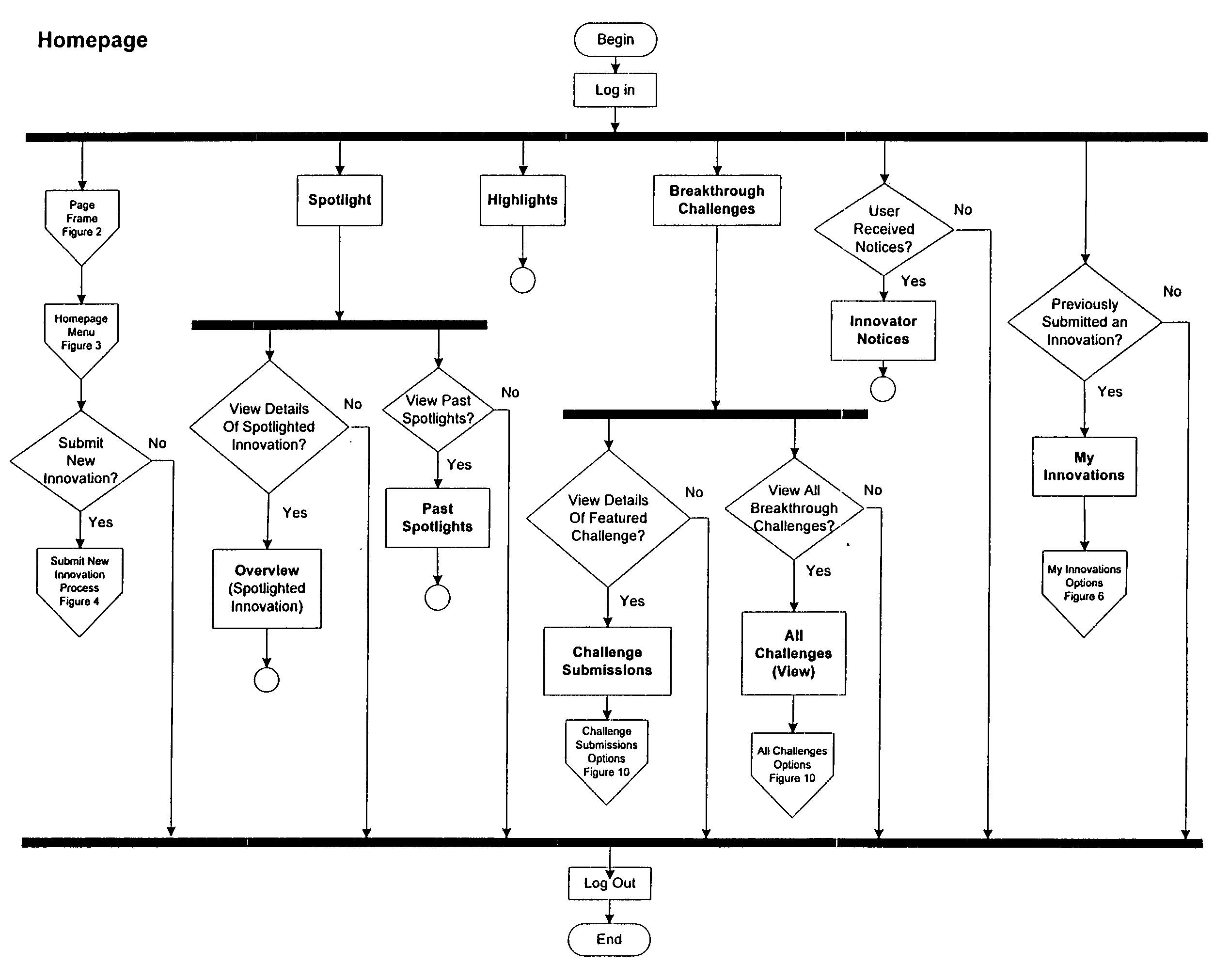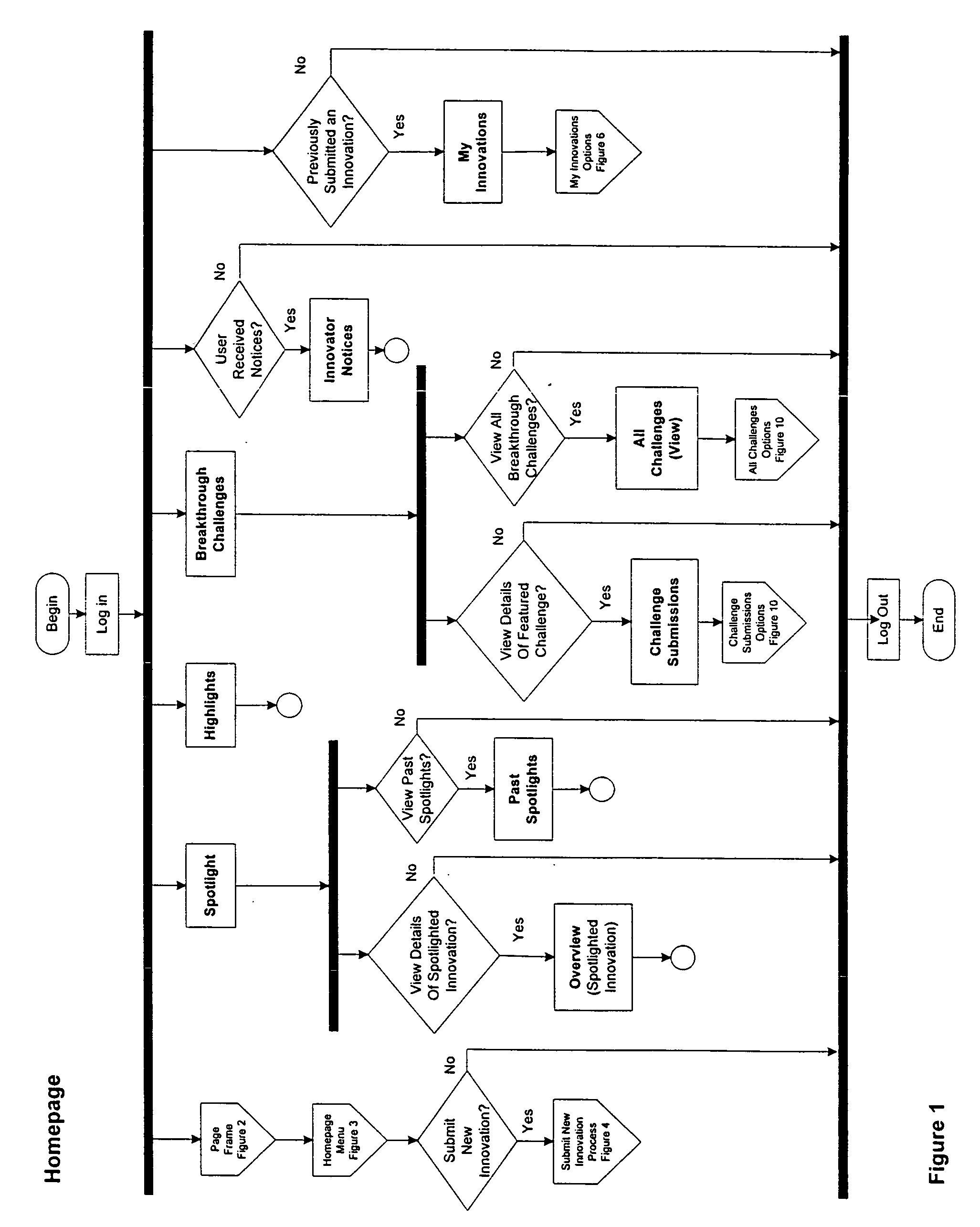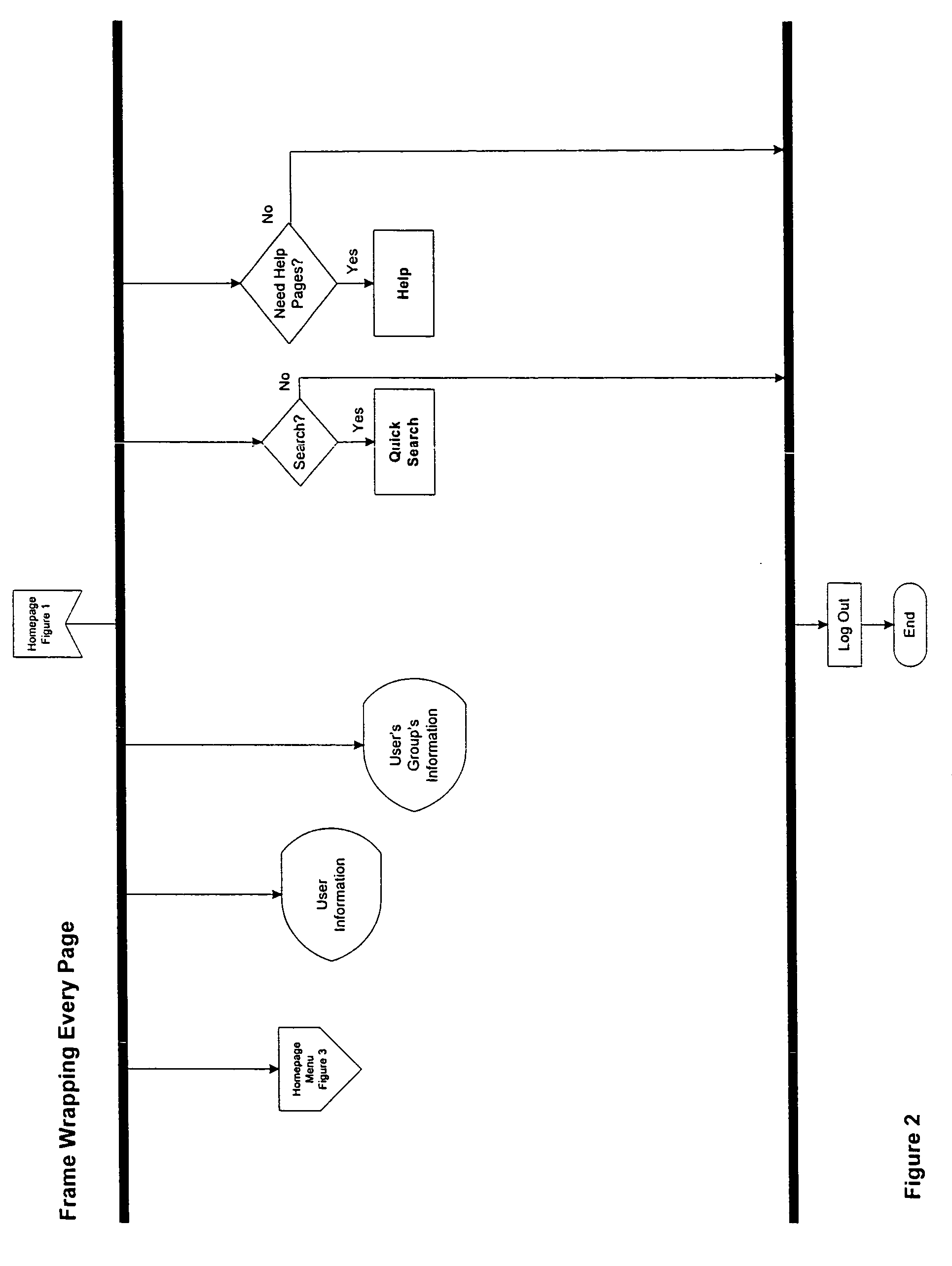System for automating and managing an IP environment
a technology of ip environment and system, applied in the field of knowledge management systems, can solve the problems of insufficient capitalization, inconvenient use, and inability to meet the needs of today's digital environment, so as to protect and protect the most valuable assets a company owns, and streamline the process.
- Summary
- Abstract
- Description
- Claims
- Application Information
AI Technical Summary
Benefits of technology
Problems solved by technology
Method used
Image
Examples
example
[0741] Essentially, the analysis process comes up with a number between 1-100 based on your answers. Assume there are two Factors. Marketing and Technical, each with two questions as described below: [0742] Marketing=30% of total score [0743] Q1. How large is the market? (1-10)=you answer 5 [0744] Q2. Is it a good market? (1-10)=you answer 10 [0745] Technical=70% of total score [0746] Q1. Is this a good technology? (1-10)=you answer 8 [0747] Q2. Is it easy to make? (1-10)=you answer 2
[0748] This shows that Marketing factors are weighted 30% of the total score, whereas, Technical factors are 70% of the score. So, if both marketing questions were answered 10 each, the total marketing score would be 20. In this case, the answer is (5+10)=15 out of a possible 20, or 15 / 20=0.75, but then you need to multiply by 30%, so 0.75*0.30=0.225. Therefore, the total weighted Marketing score is 22.5%. The Technical score is ((8+2) / 20)*0.70=0.35, or 35%, so the overall score is 22.5%+35%=57.5%
[074...
PUM
 Login to View More
Login to View More Abstract
Description
Claims
Application Information
 Login to View More
Login to View More - R&D
- Intellectual Property
- Life Sciences
- Materials
- Tech Scout
- Unparalleled Data Quality
- Higher Quality Content
- 60% Fewer Hallucinations
Browse by: Latest US Patents, China's latest patents, Technical Efficacy Thesaurus, Application Domain, Technology Topic, Popular Technical Reports.
© 2025 PatSnap. All rights reserved.Legal|Privacy policy|Modern Slavery Act Transparency Statement|Sitemap|About US| Contact US: help@patsnap.com



